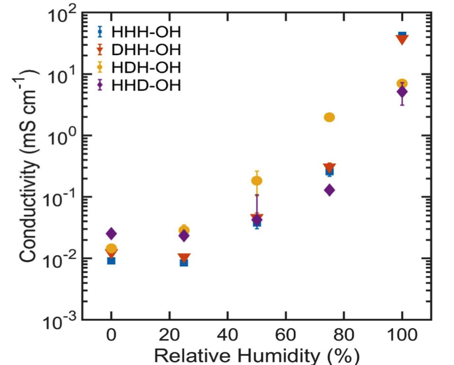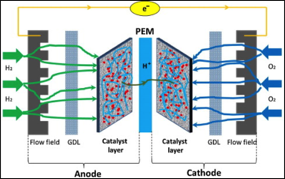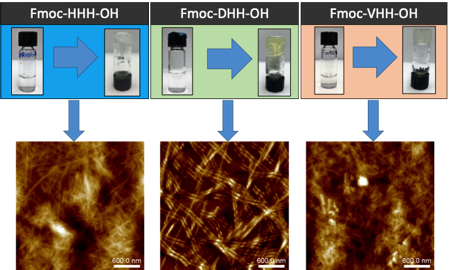


AREA 1.
Using amino acids as building blocks to design new proton transfer materials
Specific Project Aims:
In this project we will design and study the formation of non-aqueous proton wires through the self-assembly of short aromatic peptides. In particular, we propose that peptide sequences containing a hydrophobic aromatic moiety at the N terminus (to provide the pi stacking required for self-assembly) and histidine (N- containing), glutamic or aspartic acid (O containing) side chains as amphiprotic proton donor/acceptor moieties will self assemble to form nanostructures with proton transfer capabilities. These peptide structures can be further tuned to study the effect of the side chains by selectively choosing the amino acids to control for hydrophobicity, steric and ionic interactions, proton affinity and pKa.
Integrated Materials Development Group
Exploring peptide self-assembly to develop new proton trasnfer materials with the potential to replace the nafion in fuel cells.
The Probelm.
Proton exchange membrane fuel cells (PEMFCs) are generally comprised of perfluorisulphonic acid polymers such as Nafion, which rely on water for proton transfer. This effectively renders them unsuitable foe operation at temperatures exceeding 80 deg C. thus limiting both performance and tolerance to impurities. As the world continues to search for alternative energy sources, the design of more efficient, high temperature fuel cells becomes increasingly important.


HHH Tripeptide

Electrochimica Acta, 129, 2014, 343-347

